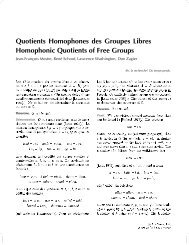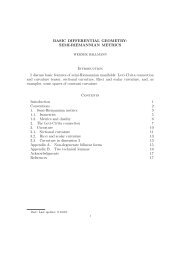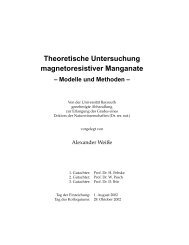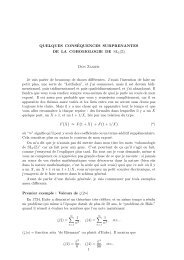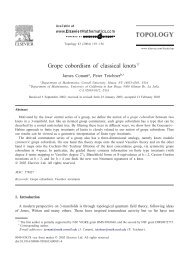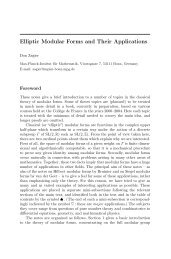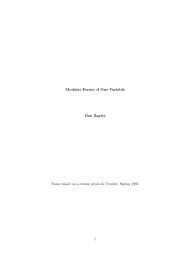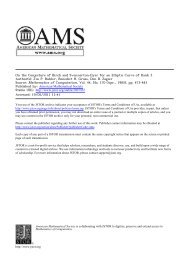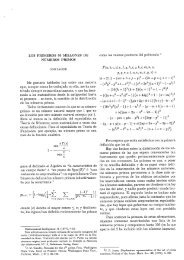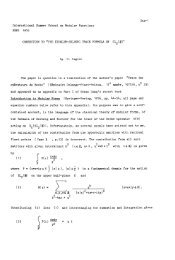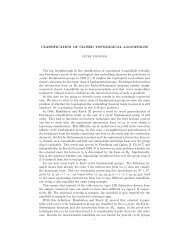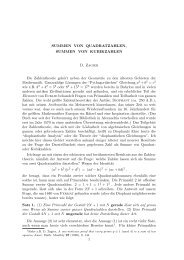A MODIFIED BERNOULLI NUMBER D. Zagier The classical ... - Up To
A MODIFIED BERNOULLI NUMBER D. Zagier The classical ... - Up To
A MODIFIED BERNOULLI NUMBER D. Zagier The classical ... - Up To
You also want an ePaper? Increase the reach of your titles
YUMPU automatically turns print PDFs into web optimized ePapers that Google loves.
Proof of (IV). Using the relation (8) between Bernoulli numbers and zeta values,we findBn ∗ = 1 n − n 4 − ∑ ( ) n+r−1 (r−1)!2r −1 (2πi) r ζ(r)and hencewhere2≤r≤nr evenBn ∗ −U n = 1 n − n 4 + 1 2 ζ( 1) ∑ ∞+ b n,l , (12)2b n,l := (−1) n/2−1 πY n (4πl)− ∑2≤r≤nr evenl=1( ) n+r −1 (r−1)!2r−1 (2πil) r − 12 √ l .On the other hand, standard formulas for Bessel functions (cf. [1], 7.2(15) and7.3(16)) give(−1) n/2−1 πY n (x) = 2R ( K n (ix) )√ ∫ π/2 ∞e −ix (t/2+ix) n−1 2 +e ix (t/2−ix) n−1 2=Γ(n+ 1 2 ) (ix) n e −t t n−1 2 dt0for n even and positive, and hence, after some simple manipulations, the formulab n,l = 2Γ(1 2 )Γ(n+ 1 2 ) ∫ ∞where f n (x) is defined for x > 0 by0(t n−1 e −t (8πlf nt√ )) 1 t − dt (13)4 πlf n (x) = (1+ix)n−1 2 +(1−ix) n−1 22(ix) n− ∑2≤r≤nr even( n−1)2(ix) −r .n−rNote that f(x) = (2x) −1/2 + O(x −3/2 ) as x → ∞, so that b n,l = O(l −3/2 ), as wealready know. Clearly f n (x) extends to C 0 := C(−i∞,−i][i,i∞) as an evenholomorphic function, and the binomial theorem gives the Taylor expansionf n (x) = ∑ ( n−(−1) r 1)2x 2r (|x| < 1).n+2rr≥0<strong>The</strong> beta integral identity( n−1)2= 1 n+2r πΓ(n+ 1 2 )Γ(2r+ 1 2 )Γ(n+2r+1)6= 1 π∫ 10u 2r−1 2 (1−u)n− 1 2 du



